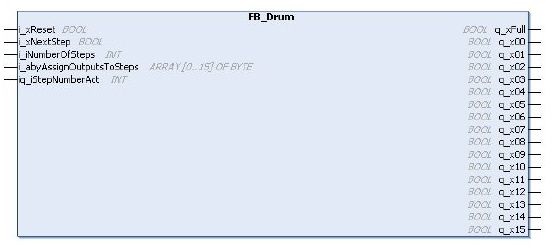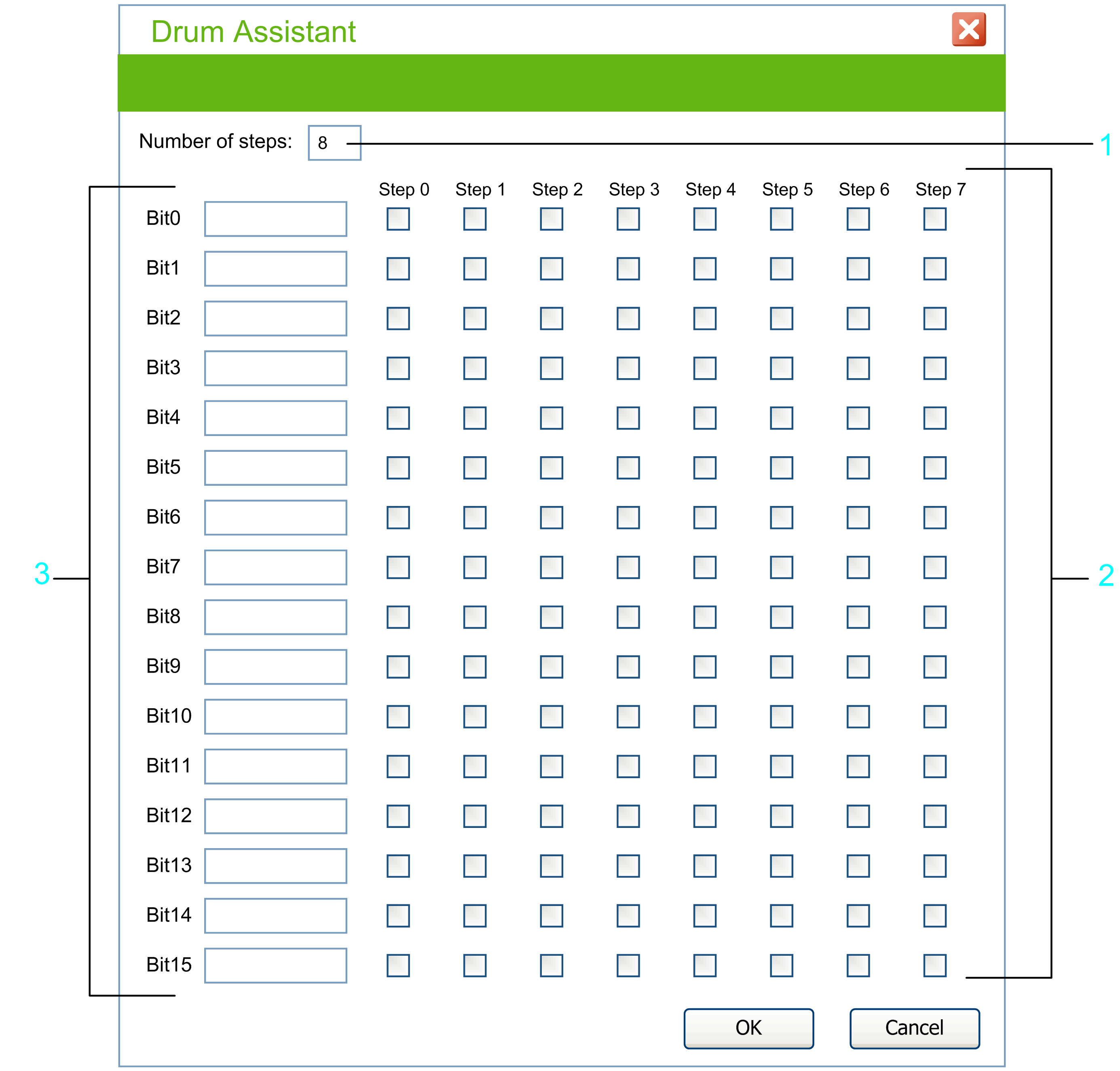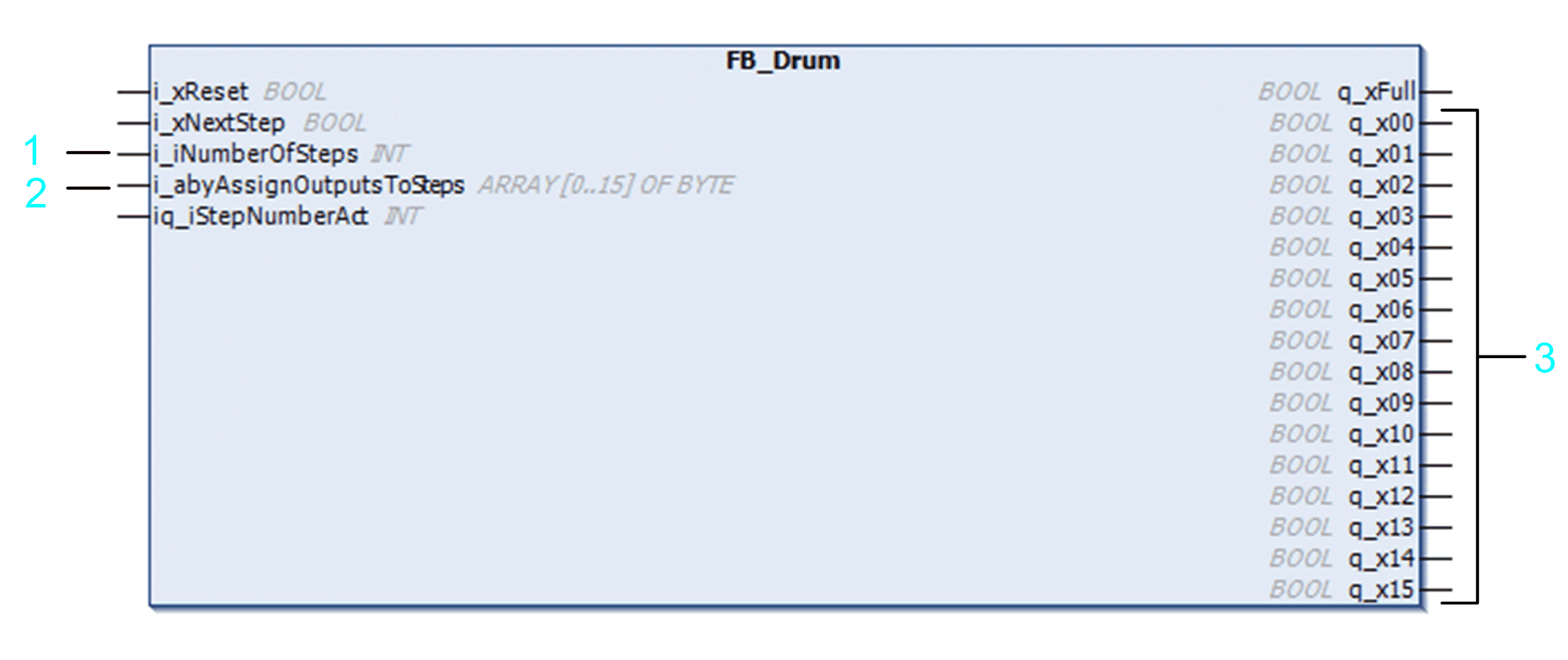The drum controller operates on a principle similar to an electromechanical drum controller. The drum can provide up to 8 states which are engaged cyclically. While a rising edge at the input i_xNextStep turns the drum further, the actual step number can also be set by the software.
Each drum state activates a pattern of up to 16 control bits so that the drum controller represents a kind of state machine.
The following graphic shows the pin diagram of the function block FB_Drum:

The table describes the input / output variables of the function block in the TwidoEmulationSupport library:
|
Input / Output |
Data Type |
Description |
|---|---|---|
|
iq_iStepNumberAct |
INT |
Current step number which can be read and written. When written, the effect takes place on the next execution of the function block. |
The table describes the input variables of the function block in the TwidoEmulationSupport library:
|
Input |
Data Type |
Description |
|---|---|---|
|
i_xReset |
BOOL |
The Reset input sets the drum controller to step 0. |
|
i_xNextStep |
BOOL |
A rising edge at this input causes the drum controller to advance by one step and updates the control bits. |
|
i_iNumberOfSteps |
INT |
1-8 (number of steps) |
|
i_abyAssignOutputsToSteps |
ARRAY OF BYTE |
Assignment of outputs 0..15 to steps 0..7 |
The table describes the output variables of the function block in the TwidoEmulationSupport library:
|
Output |
Data Type |
Description |
|---|---|---|
|
q_xFull |
BOOL |
Full output indicates that the current step equals the last step defined. |
|
q_x00 - q_x15 |
BOOL |
Outputs or internal bits associated with the step (16 control bits) and defined in the EcoStruxure Machine Expert - Basic Configuration Editor. |
The configuration of FB_Drum is not a configuration but an entry array of the function block. The following graphic shows the Drum Assistant in EcoStruxure Machine Expert - Basic:

1 Number of steps available in the drum controller (up to 8).
2 A 8x16 bitmask to assign states to all bit outputs (ARRAY [0..15] OF BYTE represents this bitmask).
3 16 bit outputs
New function block in the TwidoEmulationSupport library:
